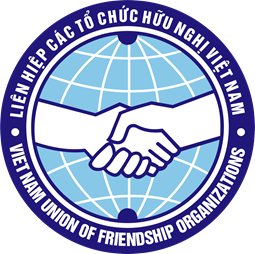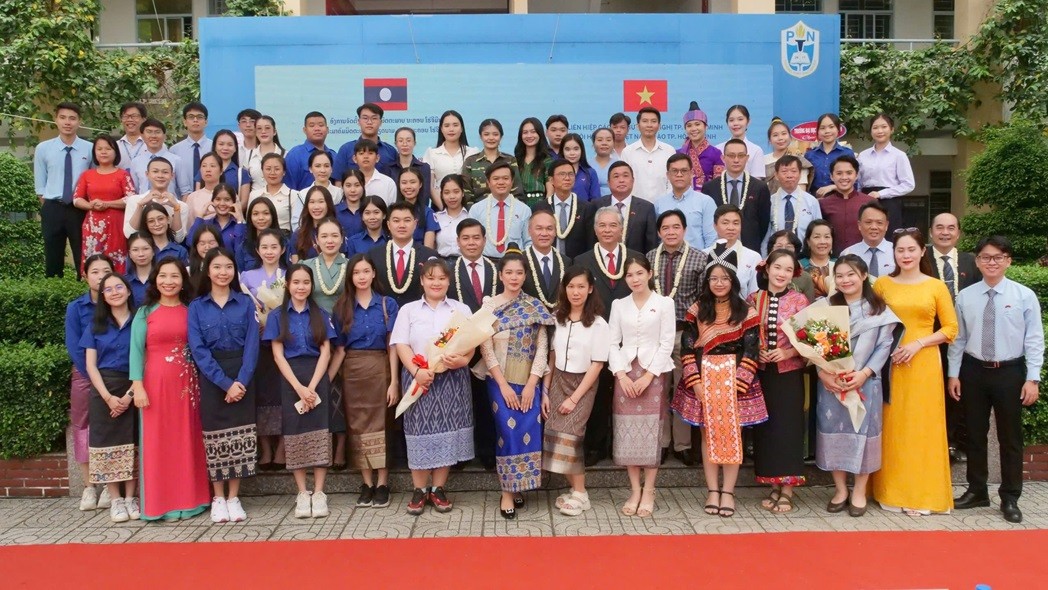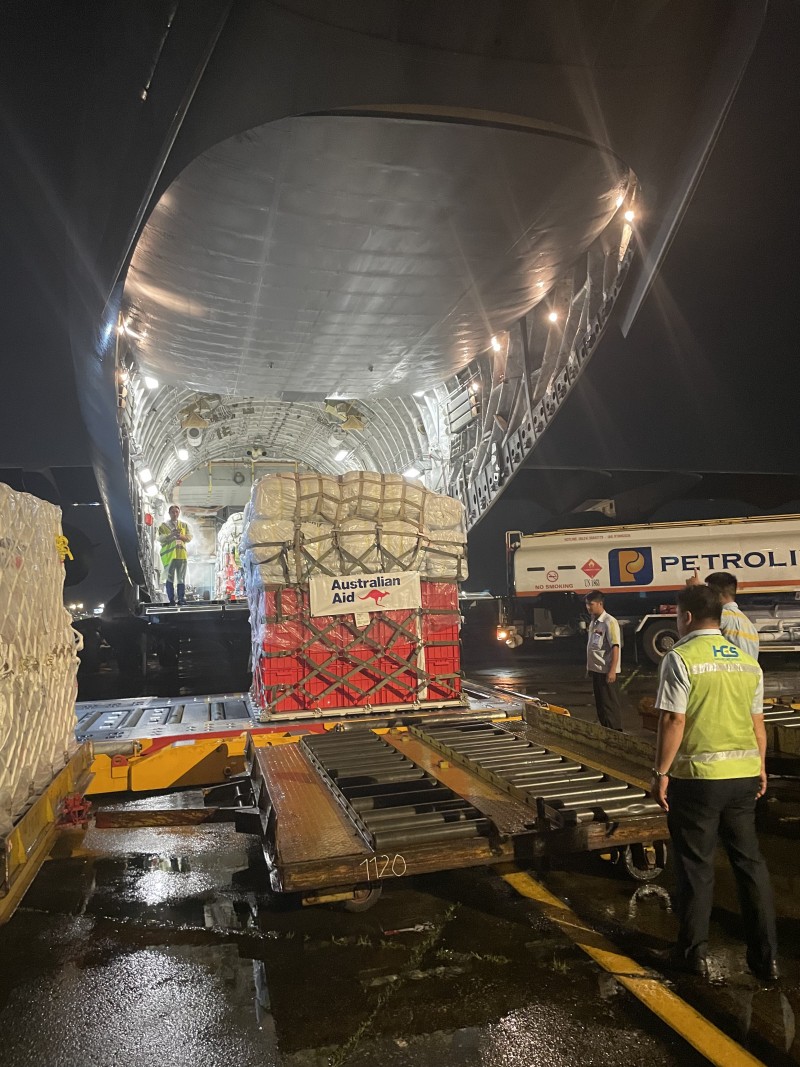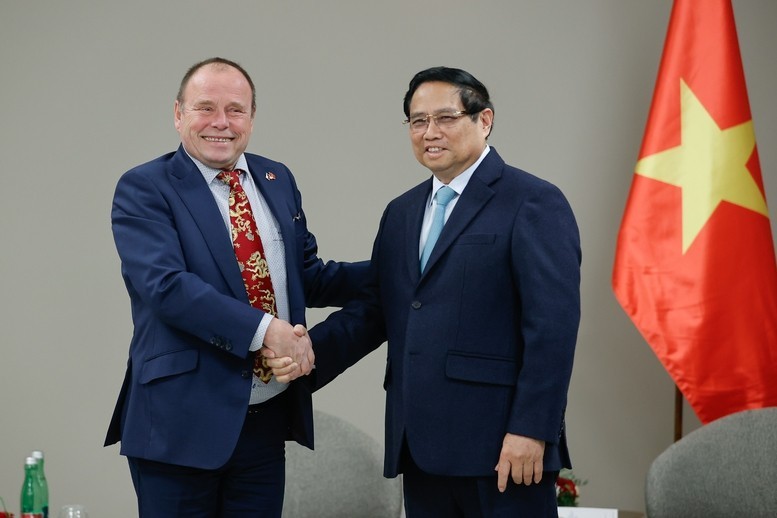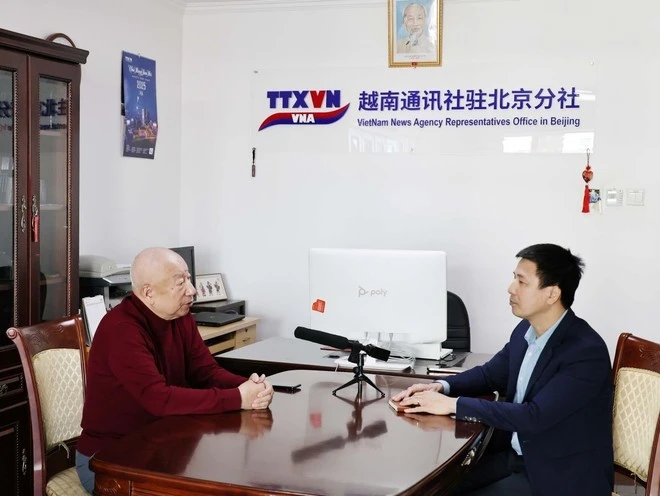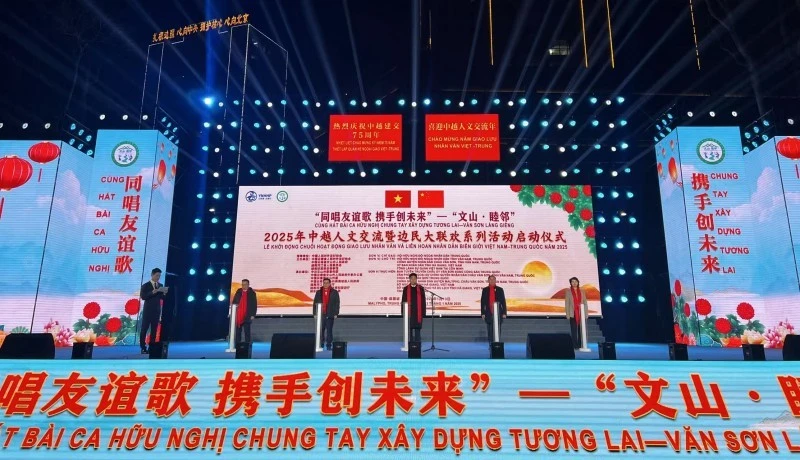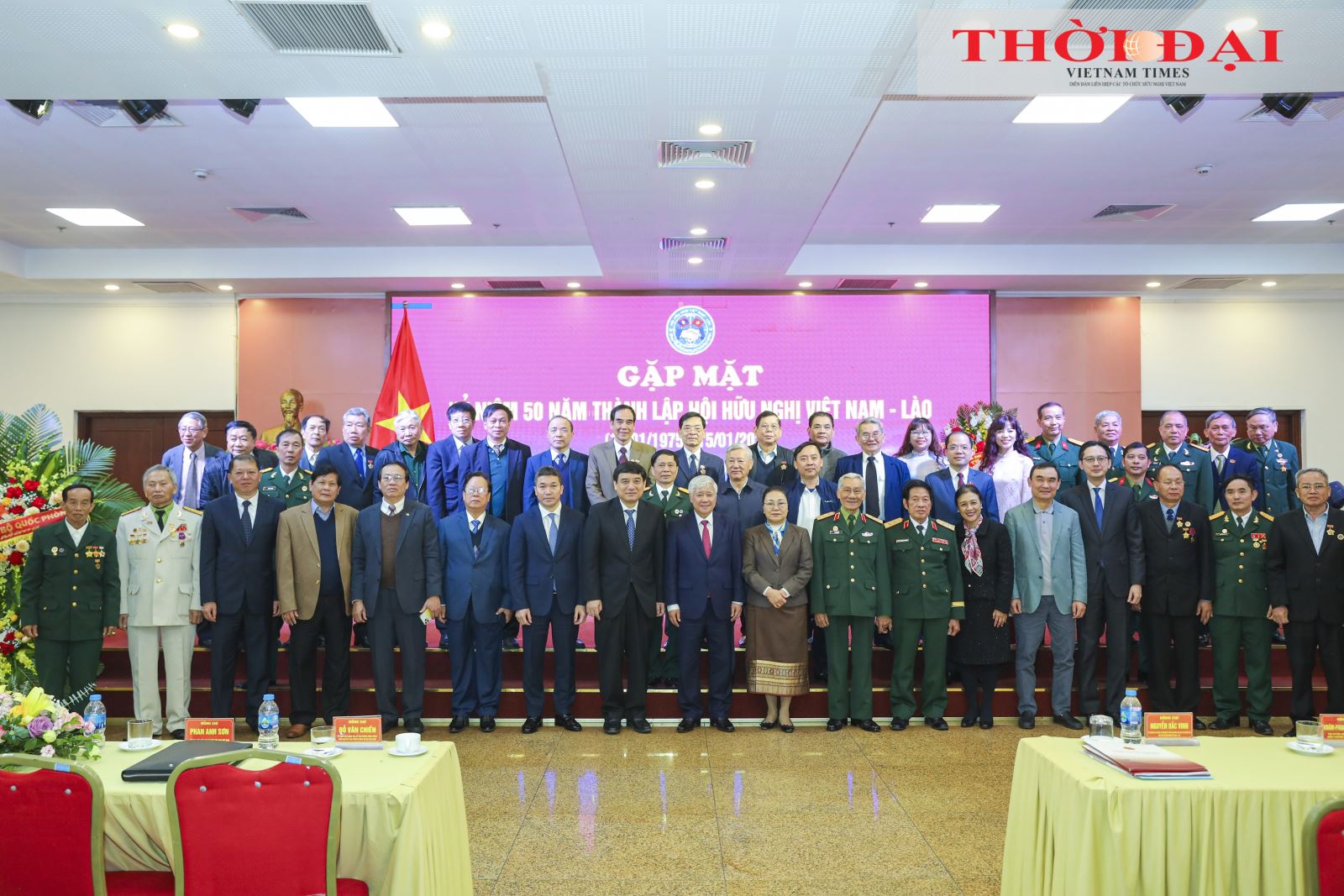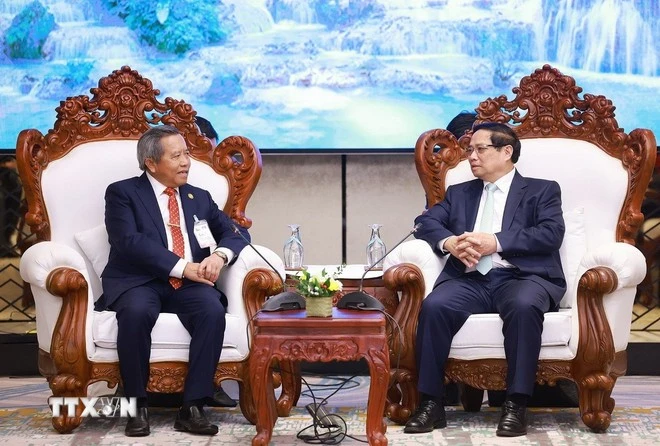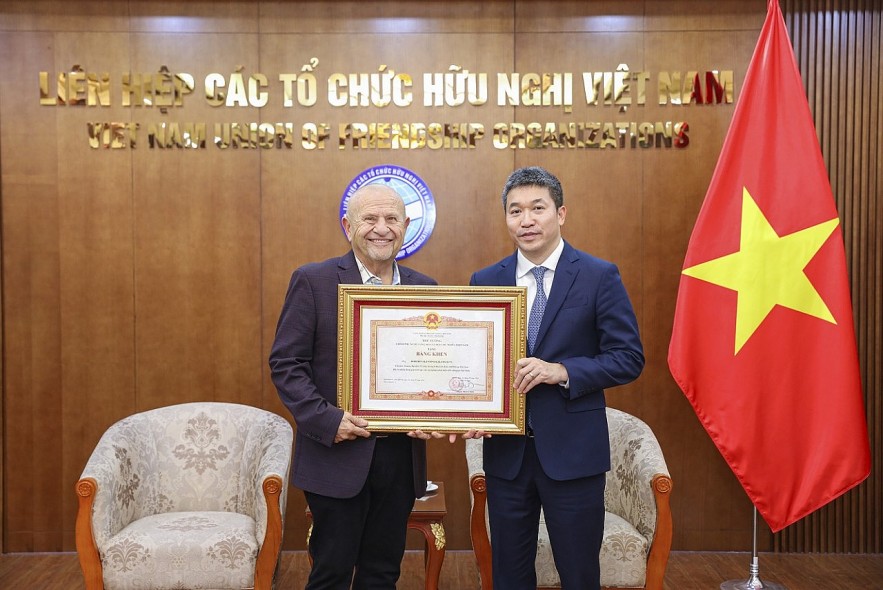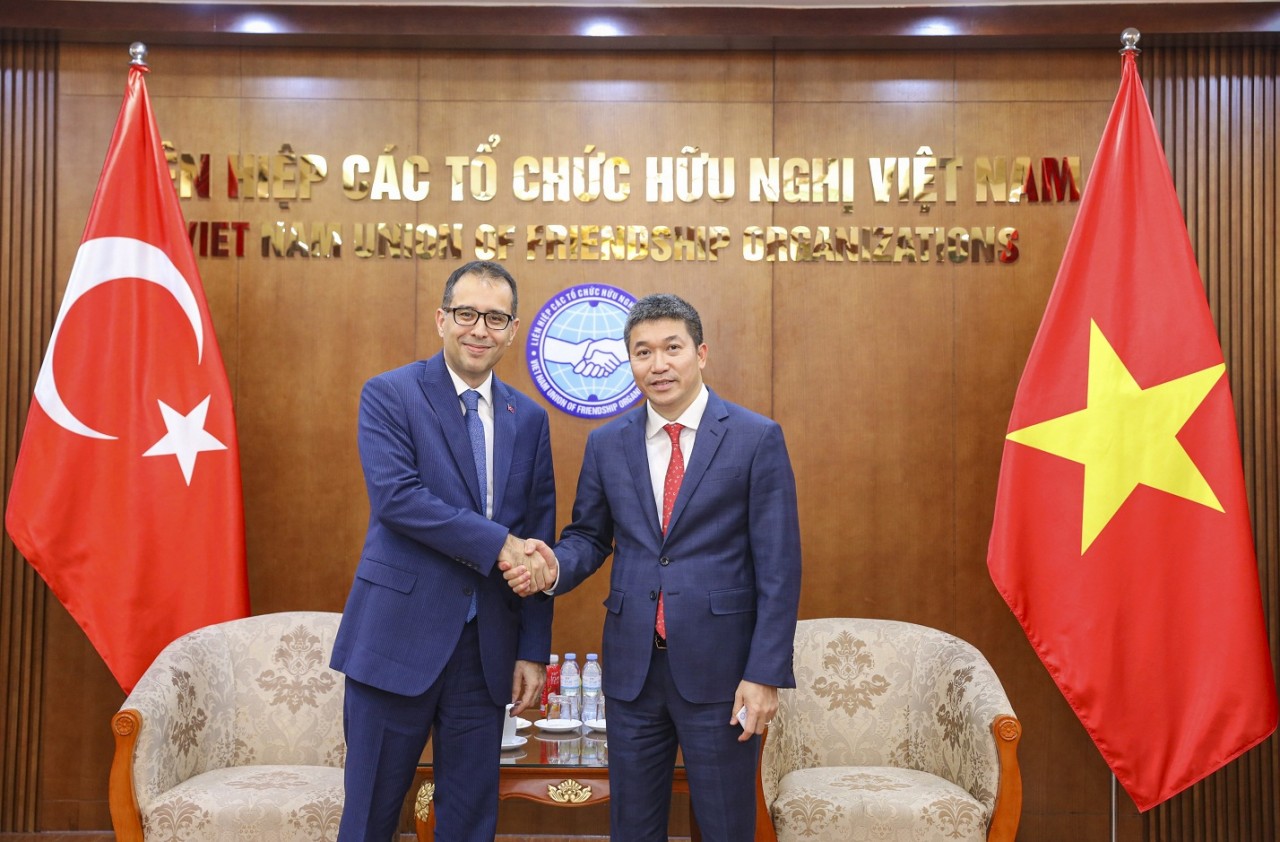After a year since the two countries elevated their bilateral relationship to a Comprehensive Strategic Partnership, what do you see as the most significant achievements in U.S. - Viet Nam relations?
We are delighted with the progress both countries have made. Over the past year, since President Biden and General Secretary Nguyen Phu Trong announced the upgrade in our bilateral ties, we have witnessed remarkable advancements reflecting our increasingly deepened relationship.
 |
| U.S. Ambassador to Viet Nam Marc E. Knapper. Photo: VNA |
The elevation of our partnership stands as a strong testament to the journey we have traveled together over nearly three decades. Our cooperation in all areas, from economics, trade, and investment to defense, healthcare, climate change response, energy, education, and security, has seen outstanding strides.
We firmly believe that Viet Nam's success is also the United States' success and vice versa. This demonstrates our growing interconnectedness in pursuit of shared prosperity, security, and well-being for the people of both nations.
In technology, we have seen significant developments, such as NVIDIA’s plan to establish a research center in Viet Nam. U.S. universities like Arizona State are building advanced programs to provide high-tech training for Vietnamese students.
In defense cooperation, notable progress includes the recent transfer of five training aircraft to Viet Nam and a US$12.5 million commitment to support the country in fisheries patrol and marine resource surveillance, enabling Viet Nam to better protect its natural resources, sovereignty, and territorial integrity.
We are also actively constructing a new embassy, symbolizing our long-term commitment to cooperation with Viet Nam.
Another milestone is in healthcare. In Can Tho, the two nations celebrated the transition from U.S. President’s Emergency Plan for AIDS Relief (PEPFAR) and Global Fund support to local social health insurance funding. Viet Nam is now able to mobilize domestic resources for HIV/AIDS prevention and treatment through its national health insurance system instead of relying entirely on international donors like PEPFAR. This marks a significant achievement in U.S.-Viet Nam health cooperation.
In energy, after six years of collaboration, we have finalized direct power purchase agreements. These accomplishments are the result of joint efforts by both governments, experts, and the media. I look forward to even greater growth in our bilateral relationship in the coming year.
How does the enhanced partnership contribute to regional stability and economic development, particularly amid emerging challenges in the Indo-Pacific?
The United States and Viet Nam are jointly committed to a free and open Indo-Pacific. Both nations share a common dedication to freedom of navigation, overflight, and strict adherence to international law. Viet Nam has been a strong voice in Southeast Asia, advocating for these important principles.
Furthermore, Viet Nam's economic growth supports regional stability. Significant supply chain shifts, particularly in semiconductors and high-tech manufacturing, have brought substantial opportunities to Viet Nam. This transformation benefits both Viet Nam and the United States and drives shared prosperity, which in turn motivates and fosters regional stability.
Additionally, Viet Nam plays an increasingly prominent role globally. Its participation in international peacekeeping missions, such as in South Sudan, and its membership in the United Nations Human Rights Council reflect Viet Nam’s commitment to global peace and stability.
The U.S. has pledged support for Viet Nam’s transition to net-zero emissions. Can you elaborate on the green energy and climate initiatives currently underway?
One standout initiative is the successful effort, over six years, to establish direct power purchase agreements, now allowing investors to contract directly with solar or wind farms. This is expected to significantly boost green energy investment and the development of new clean energy sources.
U.S. companies are showing interest in green energy investments, including pilot programs in offshore wind energy. Bilateral cooperation also extends to science and agriculture. Collaboration between NASA and local academic institutions is advancing satellite data use for improved disaster forecasting and response, directly addressing climate change impacts.
In agriculture, new partnerships are emerging. I recently visited a farm in Can Tho City that is utilizing U.S. technology to develop high-quality, low-emission rice fields. Under this project, the U.S. Department of Agriculture and USAID are working with local farmers and cooperatives to protect the environment and reduce overall emissions.
With the New Year approaching, what message would you like to send to the Vietnamese people?
Next year, Viet Nam and the United States will commemorate two significant milestones- 30 years of normalized diplomatic relations, and 50 years since the end of the war. Over the years, we have transitioned from adversaries to close friends and trusted partners. Together, we have achieved so much.
Bilateral trade has reached an impressive US$120 billion. Our cooperation spans far beyond trade, encompassing areas such as security, defense, energy, climate, and education.
These milestones are not just opportunities to reaffirm our good relations but serve as catalysts to accelerate further progress in our partnership. There is still much work to do and many opportunities to grow and strengthen our friendship. I hope to see more Vietnamese students in the United States and more American students in Viet Nam. Therefore, the message I wish to share with you is one of hope, optimism, and a shared anticipation for the new milestones in our countries' relations.
Source: Vietnamtimes
